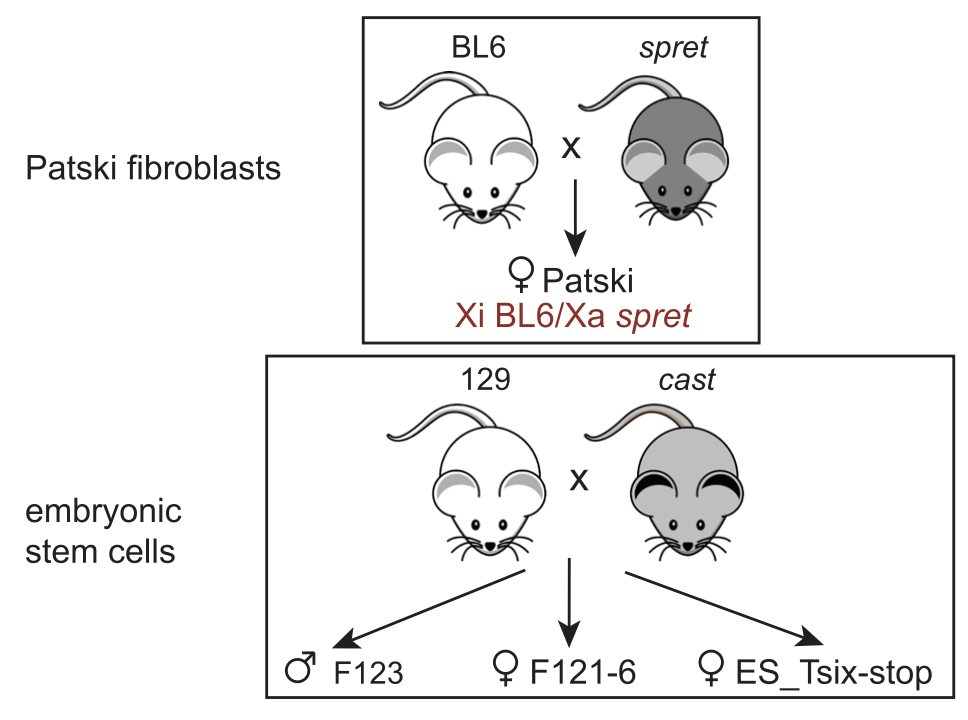Abstract
Background
Mammalian development is associated with extensive changes in gene expression, chromatin accessibility, and nuclear structure. Here, we follow such changes associated with mouse embryonic stem cell differentiation and X inactivation by integrating, for the first time, allele-specific data from these three modalities obtained by high-throughput single-cell RNA-seq, ATAC-seq, and Hi-C.
Results
Allele-specific contact decay profiles obtained by single-cell Hi-C clearly show that the inactive X chromosome has a unique profile in differentiated cells that have undergone X inactivation. Loss of this inactive X-specific structure at mitosis is followed by its reappearance during the cell cycle, suggesting a “bookmark” mechanism. Differentiation of embryonic stem cells to follow the onset of X inactivation is associated with changes in contact decay profiles that occur in parallel on both the X chromosomes and autosomes. Single-cell RNA-seq and ATAC-seq show evidence of a delay in female versus male cells, due to the presence of two active X chromosomes at early stages of differentiation. The onset of the inactive X-specific structure in single cells occurs later than gene silencing, consistent with the idea that chromatin compaction is a late event of X inactivation. Single-cell Hi-C highlights evidence of discrete changes in nuclear structure characterized by the acquisition of very long-range contacts throughout the nucleus. Novel computational approaches allow for the effective alignment of single-cell gene expression, chromatin accessibility, and 3D chromosome structure.
Conclusions
Based on trajectory analyses, three distinct nuclear structure states are detected reflecting discrete and profound simultaneous changes not only to the structure of the X chromosomes, but also to that of autosomes during differentiation. Our study reveals that long-range structural changes to chromosomes appear as discrete events, unlike progressive changes in gene expression and chromatin accessibility.
** corresponding authors
